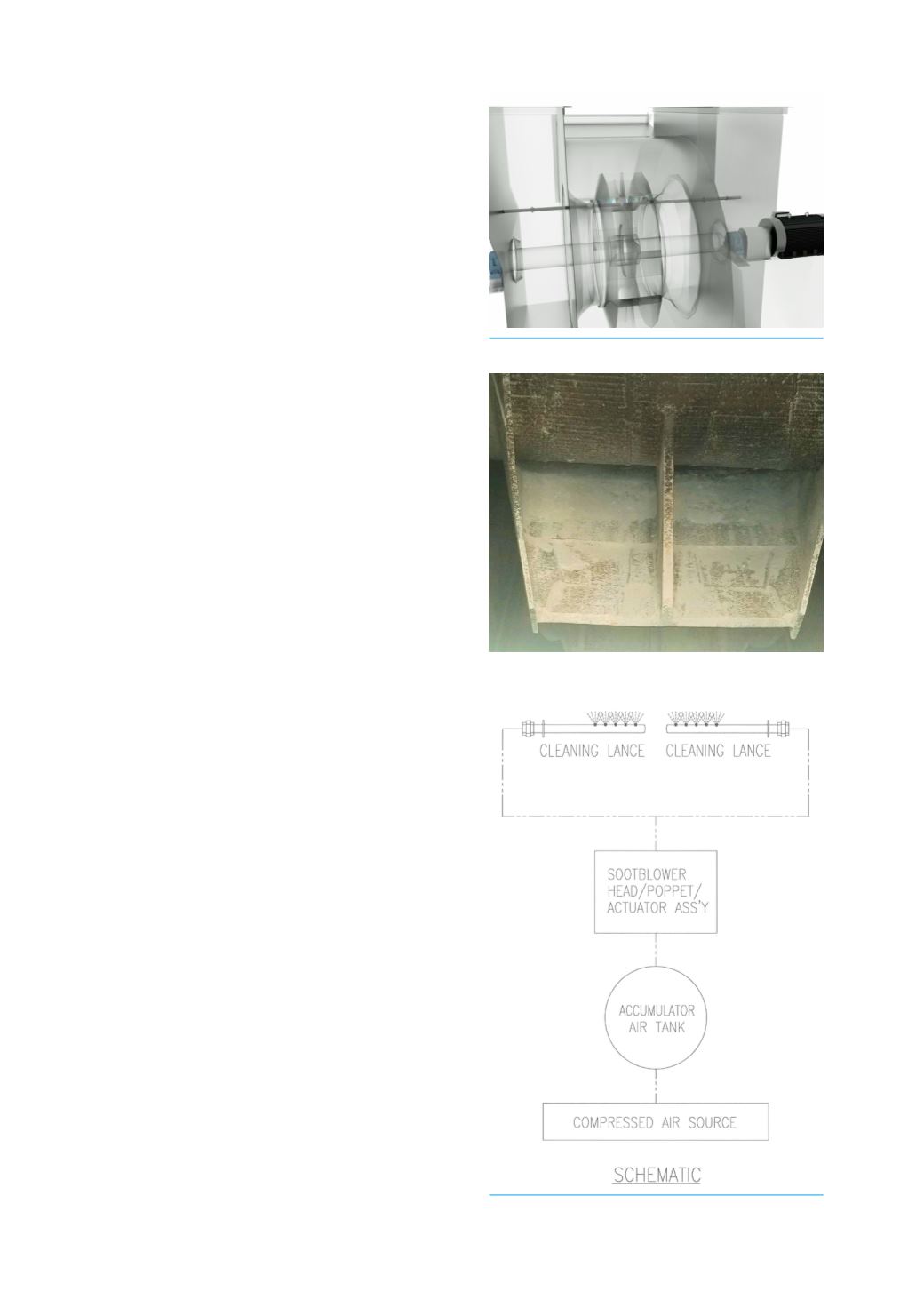
55
North America 2019
World Cement
length and number of nozzles varies according
to the size and width of the fan rotor.
The compressed air used for the cleaning is
stored in an accumulator tank. The tank size
is directly related to the size of the rotor to
be cleaned; the larger the rotor, the larger the
area to be cleaned and, in turn, the larger the
amount of reserved compressed air needed.
At defined time intervals, the fast-acting,
high-volume valve, opening in milliseconds
when triggered, will engage, allowing for a
high-volume, high‑pressure blast of air into
the cleaning lance. This is then distributed
on the blade surface by the array of nozzles.
The frequency of the firing of this valve
is dependent on the service and the dust
loading.
Considerations for the plant
The utility requirements normally provided by
the plant are a source of compressed air for
cleaning, a source of filtered compressed
air for instrumentation, a 120 V/3 PH/60 Hz
energy source, and a controlling mechanism,
such as a stand alone programmable logic
control device or a connection with logic for a
digital control system.
The volumetric requirements of compressed
air can be taxing to a plant’s normal supply
of compressed air. Dependent on the size of
the fan, the volumetric flowrate rate for the
system would range from 2 actual ft
3
/min. to
5 actual ft
3
/min. at 100 psi maximum pressure.
At this capacity rate, the system can be fired as
often as every 15 min. if needed. Using higher
pressures could result in rotor damage over
time. If this compressed air need is overbearing
to the current compressed air system, adding
a stand alone air compressor for the supply
source is a simple solution.
How it works
The time that the valve is open is relatively
short, lasting for only a few seconds. The
initial blast is where the most effective
cleaning occurs. Given that these fans
normally operate at 900 RPM or 1200 RPM,
even with a blast that is a few seconds long,
each blade will be contacted multiple times
(45 to 60 times) on each cleaning cycle. By
minimising the duration of the open valve time,
the accumulator tank still maintains a certain
degree of pressure, making the time and cost
to refill less.
Leaving the cleaning compressed air unfiltered
and moist can be an advantage. These moisture
droplets, when exposed to the hot gas stream,
will flash and immediately expand. The expansion
rate for water to steam at atmospheric pressure
is approximately 1600 to 1. This rapid expansion
Rendering of the compressed air system.
Another example of buildup on a backward
curved blade.
Schematic of CAC system.








